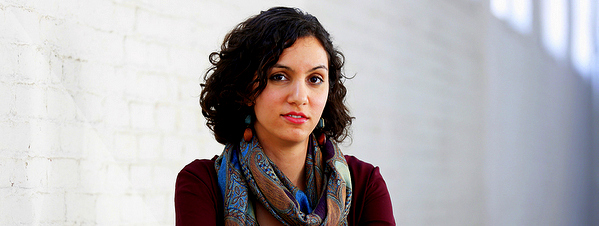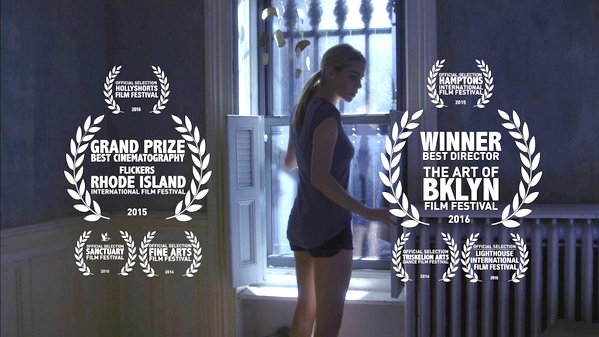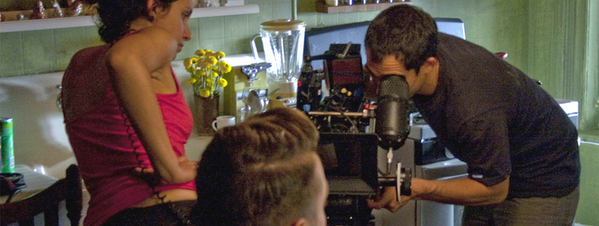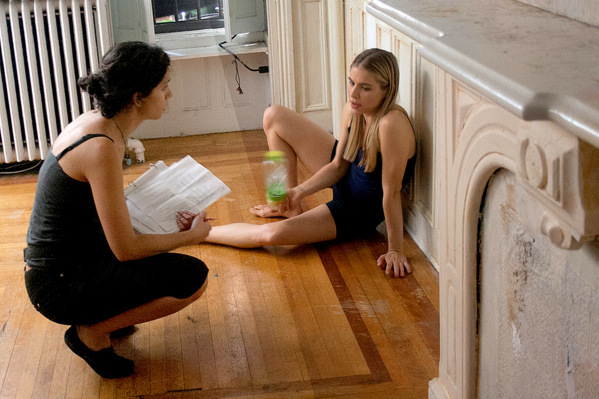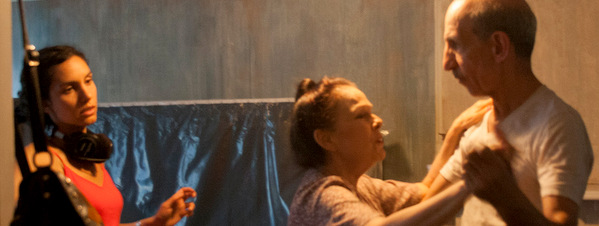Bat-Sheva Guez is a director, producer and editor. She weaves dance, magic and experimental techniques into visually compelling, character driven stories. She has directed over a dozen short films and screened them in festivals worldwide including the Hamptons International Film Festival, the Rhode Island International Film Festival, the Atlanta Underground Film Festival and more.
Bat-Sheva Guez is the recipient of the JT3 ARTIST AWARD for Screenwriting & Directing. She won BEST DIRECTOR at the Art of Brooklyn Film Fest for her short film, Behind the Wall. The film screened at over 20 festivals worldwide, winning the Panavision Grant for BEST CINEMATOGRAPHY at the Rhode Island Int’l Film Festival, BEST PRODUCTION DESIGN at the Canberra Short Film Festival and BEST SHORT FILM at the Moondance Film Festival. Guez was awarded the “Write By the Sea” Screenwriting Retreat from the Lighthouse Int’l Film Festival.
Directing #onset #condenast pic.twitter.com/hN2AfyS6rJ
— Bat-Sheva Guez (@batshevaguez) August 9, 2016
With her production company, Adventure Pants, Bat-Sheva Guez directs films for clients like Lincoln Center featuring artists and performers such as New York City Ballet, Paul Taylor Dance Company, and American Ballet Theatre to name a few. She’s directed a web series featuring New York’s Underground Performing Arts scene, a series of videos for Conde Nast, and promos for think tanks, non-profits, dance companies and brands. She is a member of Film Fatales Shorts, the filmmaker HERS, and the Directors Collective.
How would you describe your work as a director
I am a writer/director who strives to push the boundaries of visual storytelling. I have been known to build special 3D sculpture screens for my work, convert a theater into a massive under-bed world, choreograph dancers to partner with split-screen duplicates of themselves, and make music out of old radiators. I strive to experiment within the medium and then apply these experimental techniques to character-driven films, films that are emotionally accessible and entertaining, and yet have a little something more to offer.
How did you get into directing
I started directing when I was a little kid. My younger brother my cousins and I produced short plays in our living room, and we acted in them ourselves. When I was in fourth grade, I directed an evening length play in my parents’ basement, complete with a very elaborate set design. We made giant messes during rehearsals – and rushed to clean up before my mother got home from work each day. In High School, in between acting in (and directing one of) the school plays, I borrowed my dad’s video camera and started making movies. My father had directed a few films himself in his younger days, so the art form came very naturally to me. It was something that I always wanted to do. I can’t really remember a time when I didn’t want to be a director
How do you choose a project to direct
I usually look for something that sparks my interest, a project where I can learn something new. I have a relentless thirst for knowledge, and any time I get to do a bit of research before making a film, I get excited. I’m also very drawn to dance and experimental storytelling techniques, so I often try to weave some of these elements into my existing work.
Do you take courses to increase your craft
It’s really important to keep studying the craft as much as you can. I’ve taken the Directing Actors Workshop with Adrienne Weiss twice. She’s great. I read a lot of books on filmmaking like Mastershots Vol. 1 by Christopher Kenworthy. I sign-up for occasional memberships to Lynda to keep on top of the latest software. I belong to a Directors Collective, where, once a month, we practice directing actors in a short scene and give each other feedback on our work. (This opportunity to practice has been invaluable!) I’m also a fan of the Hollywood Camerawork DVD Set which teaches camera blocking and staging.
What books do you read
I usually try to alternate between fiction and non-fiction books, though sometimes I’ll read them at the same time. Right now, I am slowly making my way through The Buried Giant by Kazuo Ishiguro, The Lacanian Subject by Bruce Fink, and Introducing Quantum Theory: A Graphic Guide to Science’s Most Puzzling Discovery by J.P. McEvoy
Why will you choose an actor, writer or producer. What do you look for
I look for actors who can be really present in the scene and who can be really present with each other and connect with each other. And I also look for some innate energy in the performer that matches the energy I have in mind for the character. For my latest short film, Behind the Wall, I was moved by Alexandra Turshen’s performance because she seemed to have a deep connection to the character’s plight. Later, I learned that she shared a similar story to the protagonist. They both had been professional dancers whose career abruptly ended after an injury. Both had to reinvent themselves and find a new self-identity. It just seemed like Alex got it somehow.
Briefly explain your latest work
I am on the festival circuit with a short film entitled Behind the Wall. We’ve screened at twenty festivals and venues so far. It’s been a great tour. We won Best Cinematography at the Rhode Island Int’l Film Festival, Best Director at the Art of Brooklyn Film Festival, Best Production Design at the Canberra Short Film Festival and Best Short Film at the Moondance Film Festival among others. Behind the Wall is a magical realism story about an injured dancer who escapes her old life only to discover a musical surprise behind the wall of her apartment.
The story for this film was once a subplot in an early draft of my feature script entitled, And how she which illustrates different magical encounters in an old Brooklyn neighborhood. This short began as a seed of a story that never made it into the final script for And How She… So I planted it and helped it grow into a film all its own, a project that is set in a similar universe to the feature, but with different characters and a different plot. Right now, we’re harnessing the energy from Behind the Wall’s success to make the feature.
Explain Key Challenges on our Last Film
When shooting Behind the Wall, it was helpful for me to be both the writer and director of the film because it allowed me to solve last-minute production problems with rewrites. For example, during our third and last shoot day, we looked with mounting dismay at the number of pages we had left to shoot. Production was just taking longer than we had anticipated and with every tick of the second-hand came the age-old question of the filmmaker: Were we going to make our day?
So I sat down with my script amid the bustle of the crew and started cutting. I cut out several pages and quickly wrote a short scene to connect the story between the severed section. And there we were, still behind schedule, but able to make our day and finish the shoot – with a tighter script to boot! It helps to be versatile on set – and to think fast in the middle of the night.
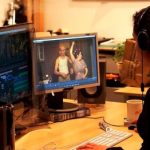 What advice would you give to female directors around the world
What advice would you give to female directors around the world
I would encourage female directors to find other female filmmakers and band together. I’ve recently joined a number of filmmaker collectives geared towards mentorship, education and support, groups like Film Fatales Shorts and the FilmmakeHERS. These collectives have had such a positive influence in my life. It’s just easier to fight the good fight when we do it together!
INTERVIEWS
more interviews

